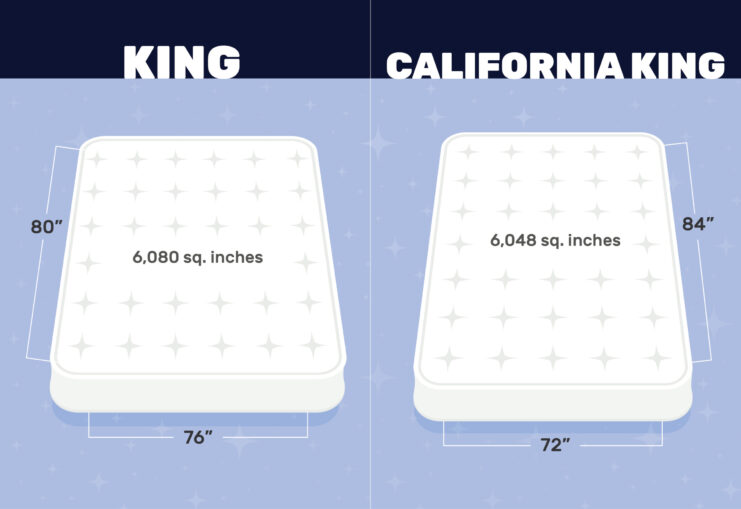Selecting the right mattress size is crucial for sleeping comfortably, especially when choosing between a California King and a King mattress. The primary difference lies in their respective dimensions. A California variant mattress is designed with a longer and narrower build, with typical dimensions of 72 inches wide by 84 inches long.
It provides extra length for taller individuals and can fit better in rooms with an elongated shape. On the other hand, a standard mattress, at 76 inches wide by 80 inches long, offers more width and is ideal for couples who require additional space side to side.
The suitability of each mattress size to individual sleeping needs is essential. A California King can accommodate taller sleepers or fit into narrower bedrooms without compromising on luxury space.
The King mattress, conversely, with its wider surface, may better serve couples desiring more elbow room or families with children who might climb in during the night. Both sizes require specific sheets and bedding, with the California King often having a higher price tag due to its specialized dimensions.
Key Takeaways
- A California King mattress is longer and narrower, while a King mattress provides a wider sleeping area.
- The choice between mattress sizes depends on personal needs such as sleeper height and room dimensions.
- California King and King mattresses necessitate size-specific bedding and have different price considerations.
History and Evolution of Mattress Sizes
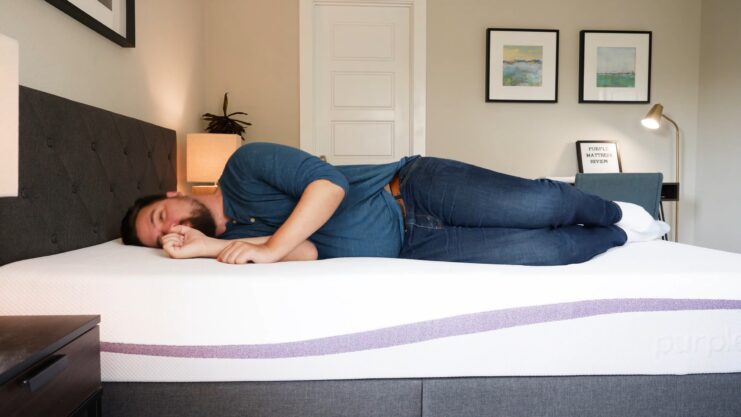
The evolution of mattress sizes has been shaped significantly by consumer demand and cultural shifts. The standard sizes, such as twin, full, queen, and king, have been augmented by variations to meet different spatial and personal comfort needs.
King and California King are both prevalent choices for luxury and comfort. The King, often referred to as the Eastern king, has dimensions typically around 76 inches by 80 inches. This square-like shape is preferred by many for providing ample space in both width and length.
The California king, or Western king, was introduced to provide a solution for taller people needing extra length. It typically measures slightly narrower and longer than the standard king, at approximately 72 inches by 84 inches.
This size became popular as a status symbol on the West Coast of the United States before gaining a broader following.
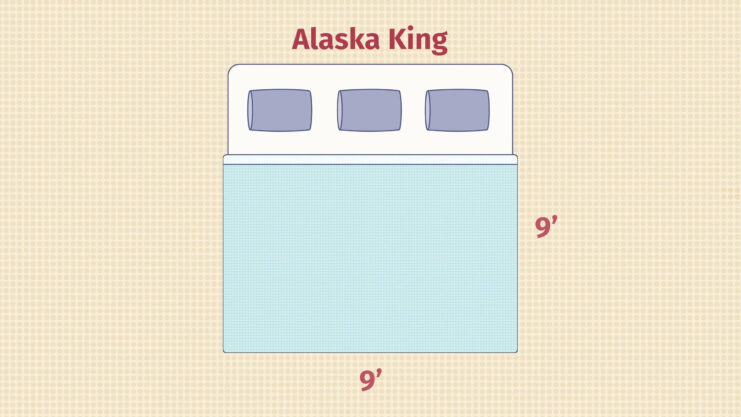
- Alaskan: Recognized for its vast dimensions of around 108 inches by 108 inches, this size provides an even more spacious sleeping area than standard king beds.
- Texas: Slightly narrower than the Alaskan, a Texas comes in at about 80 inches by 98 inches.
- Wyoming: This size offers a happy medium between standard and overly large options, with measurements close to 84 inches by 84 inches.
Mattress sizes continue to adapt, providing customized options like the Texas and Wyoming as consumers’ requirements for space and comfort evolve. While the standard sizes remain dominant in the market, these variations have carved out a niche, attesting to the diversity in sleep preferences and bedroom dimensions.
What About Dimensions?
Choosing between a California King and a King size mattress revolves around dimensions that cater to space preferences and personal stature.
King Size Dimensions
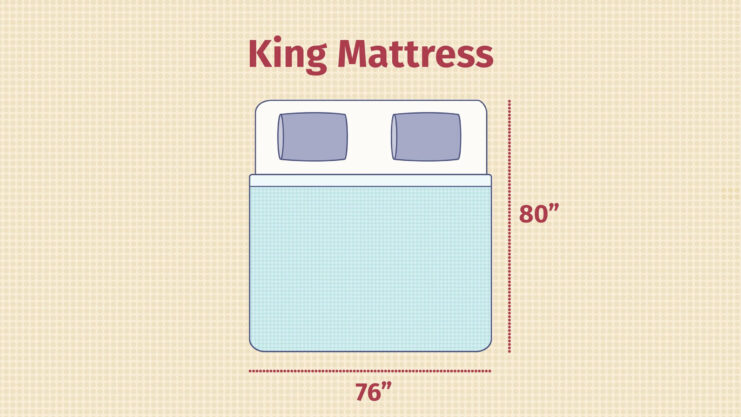
King size mattresses are designed to offer generous space and are often considered the wider option. The dimensions typically measure 76 inches in width and 80 inches in length. They provide ample room for couples and are well-suited for spacious bedrooms.
California King Dimensions
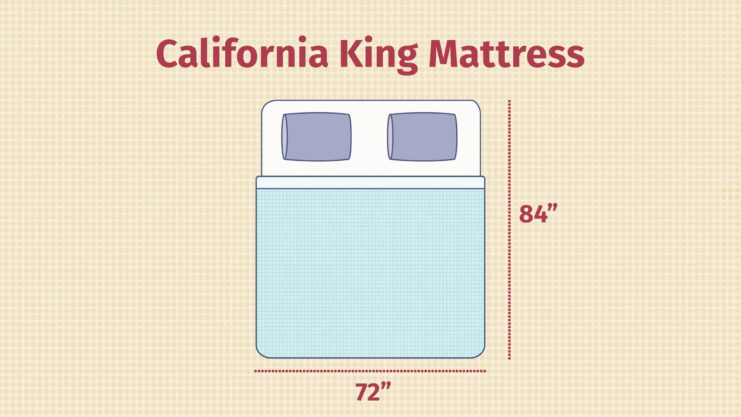
California mattresses, commonly referred to as Cal King, are narrower but longer. A standard California mattress measures 72 inches in width and 84 inches in length. This size is preferable for taller individuals and can fit more proportionately in narrow rooms.
Pros and Cons of Each Mattress Size
When deciding between California King and King mattresses, one must consider the specific dimensions and how they cater to individual sleep preferences and room layouts.
Pros of CL
- The California King provides ample length, which is ideal for individuals who are taller than average, allowing for a more comfortable sleeping experience without the risk of feet hanging over the edge.
- With its narrower width compared to the King mattress, it fits better in longer, more narrow rooms, offering a larger surface area that caters to various sleep positions while maintaining personal space.
Cons of CL
- Due to the California King’s larger space requirements, not all bedrooms can accommodate its extended length, potentially making it a less versatile option for some living spaces.
- Bedding and accessories for these mattresses can be more difficult to find and might carry a higher price tag, due to their less common dimensions compared to standard King mattresses.
Pros of King Mattress
- A King mattress is wider than a California King, offering more personal space for couples, making it conducive to creating a comfortable sleep position without feeling cramped.
- These mattress fits in most master bedrooms comfortably and provides a significant surface area, allowing sleepers to stretch out and still have plenty of room.
Cons of King Mattress
- For more narrow rooms, a mattress might overwhelm the space, lacking the proportional fit that a narrower California King could provide.
- While a King mattress offers ample width, it may not be the best fit for particularly taller individuals who may prefer the extra length a California King offers to avoid having their feet hang over the edge.
Mattress Firmness and Materials
When choosing a mattress, one must consider both the materials used in the mattress construction and the firmness level. These factors directly impact the comfort, support, and longevity of your mattress.
Mattress Materials
Different materials affect the performance and feel of mattresses significantly. Innerspring mattresses are traditional and are known for their support and bounce. They have a network of coils that provide support and are often topped with a layer of comfort materials like foam or fiber.
Memory foam mattresses offer a unique feel; they conform to the body and distribute weight evenly, which can reduce pressure points. The density and quality of the memory foam can affect durability and support. An organic mattress typically refers to mattresses made with natural materials like organic latex, cotton, or wool.
These materials are often hypoallergenic and environmentally friendly, as they come from sustainable sources and are processed without harsh chemicals. Hybrid mattresses combine the support of innerspring coils with the comfort of memory foam or latex.
This blend offers a balanced comfort, with the firmness typically mitigated by the upper layers’ materials.
Firmness Levels
The firmness of a mattress describes how hard or soft it feels. Firmness levels can range from plush to firm and are often subjective, with individual preference playing a significant role.
- Soft: Often preferred by side sleepers, soft mattresses offer significant contouring for pressure relief.
- Medium: Suitable for a wide range of sleepers, medium-firmness provides a balance of support and comfort.
- Firm: Ideal for stomach and some back sleepers, firm mattresses offer little conforming, providing a solid sleeping surface that aligns the spine.
It’s important to note that the materials of a mattress influence its firmness. Memory foam can come in various firmness options, whereas an innerspring’s firmness is mostly determined by the coil construction and its gauge. Hybrid mattresses offer a customized firmness experience due to their combination of coils and foam or latex.
Suitability for Different Sleepers
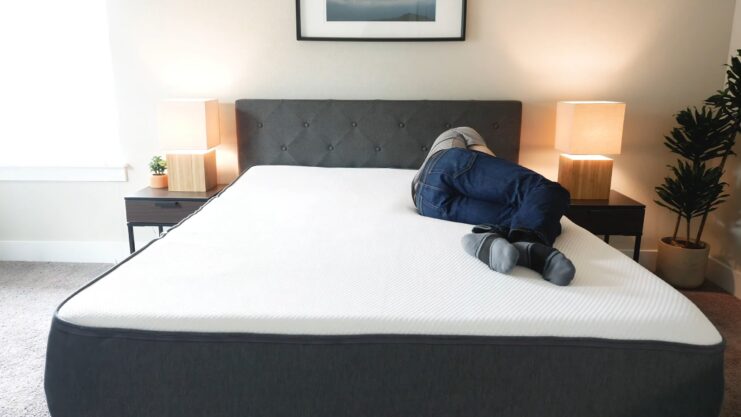
Choosing the right mattress plays a crucial role in ensuring a good night’s rest. For different sleepers, size preference may vary based on their body type and room occupancy.
Couples and Families
For couples, a standard king mattress offers maximum width, providing ample space for two people to sleep comfortably without disturbing one another.
This size is especially well-suited for those who also might share the bed with children, as it affords extra space for a family cuddle or when little ones climb in during the night.
The dimensions — typically 76 inches wide by 80 inches long — ensure enough surface area for both partners and possibly a small child.
Single Adults and Taller Individuals
On the other hand, single adults or those towering over six feet tall may prefer a California king mattress, which prioritizes length and is well-suited for tall sleepers.
With dimensions of approximately 72 inches by 84 inches, it provides an additional four inches in length compared to a standard variant, making it ideal for anyone above average height, particularly those who are back or stomach sleepers.
For side sleepers who are less impacted by the length of a mattress, both options can be suitable, with the choice largely depending on personal comfort and bedroom size.
Bedding and Accessories Compatibility
When selecting bedding and accessories, compatibility with the mattress size is vital for both aesthetic appeal and functional use. The distinction between King and California King dimensions dictates specific needs for sheets and foundations.
Sheets and Comforters
King Mattresses typically measure 76 by 80 inches, which requires sheets and comforters that are specifically designed to fit these dimensions. California King Mattresses, being 72 inches wide and 84 inches long, necessitate longer but slightly narrower bedding.
While some bedding items like duvet covers and comforters may be used interchangeably, the fitted sheets must correspond to the exact mattress type to ensure a proper fit.
For example:
- King Fitted Sheet: 76″ W x 80″ L
- California King Fitted Sheet: 72″ W x 84″ L
Bed Frames and Foundations
Choosing the right bed frame or foundation is essential for both variants mattresses to provide adequate support and maintain warranty standards. King-sized bed frames are designed to match the width and length of a mattress perfectly.
California King bed frames are tailored to fit the unique dimensions of a California King mattress. Additionally, for beds with adjustable bases, it is important to ensure the base matches the specific mattress size to function correctly.
Required dimensions:
- King Bed Frame/Foundation: Must accommodate 76″ W x 80″ L
- California King Bed Frame/Foundation: Must fit 72″ W x 84″ L
When considering accessories like mattress protectors or box springs, dimension-specific products are also necessary to prevent shifting and to guarantee full coverage of the mattress for protection and comfort.
Space Considerations and Room Dimensions
Choosing between a King and California King mattress depends on the specific dimensions of an individual’s bedroom. The key consideration is ensuring the bed fits comfortably within the room, allowing for adequate space to move around.
Room Size for King Beds
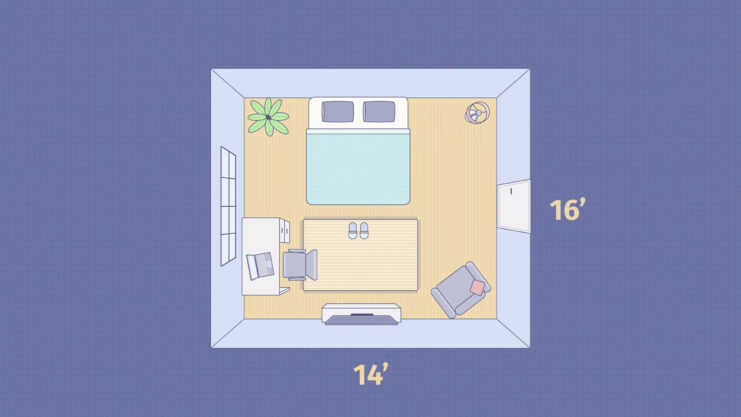
A standard King bed measures 76 inches wide by 80 inches long. For these beds, the recommended room size is at least 12 feet by 12 feet. Ideal for larger master bedrooms, this allows for proper balance and enough space around the bed to facilitate ease of movement, including space for nightstands and walking area.
Room Size for CL Beds
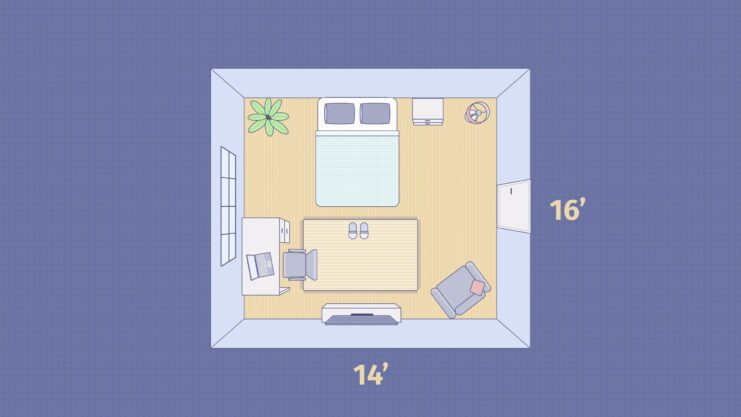
The California King bed, being 72 inches wide and 84 inches long, is a good option for narrower rooms that can accommodate its length. It is slightly narrower and longer than a standard King, making it optimal for taller individuals or when the bedroom space is more rectangular. To accommodate it, a room should ideally measure at least 12 feet by 14 feet.
Cost Analysis and Budget Considerations
When considering an upgrade from a queen mattress to a larger option, budget plays a critical role. The choice between a California King and a King mattress involves not only size preferences but also cost considerations and long-term value.
Price Comparison
California King mattresses typically carry a higher price tag than the other mattresses due to their less common size. This size difference often results in a higher cost for bed frames, sheets, and mattress protectors, with prices varying depending on the brand and quality.
For comparison, a standard variant mattress might cost anywhere between $1,000 and $3,000, while California Kings can range from $1,200 to $3,500. These prices are indicative and can be influenced by several factors including materials, brand reputation, and point of purchase.
Long-Term Value
The best mattress for an individual isn’t solely defined by initial price but also by its durability and how it meets sleep preferences. California King mattresses can offer more foot room, which may be beneficial for taller individuals, thereby possibly justifying the higher cost over time.
King mattresses are more widely available, making the long-term costs of accessories and replacements likely to be less expensive. Consumers should also consider the longevity of the mattress and potential savings from decreased need for replacements.
Both choices have varying availability in the market, with King mattresses being more common and often a go-to for general needs. These are becoming more accessible as demand grows. It is important for buyers to assess their specific requirements and make a cost-effective decision that aligns with both their budget and sleep needs.
Specialty and Oversized Mattress Options
When it comes to finding the perfect mattress for personal comfort and room aesthetics, shoppers often consider specialty sizes like the split king and split California, as well as unique oversized options such as the Alaskan, Wyoming, and Texas mattresses.
These alternatives cater to a variety of specific needs, from adjustable bed compatibility to accommodating extra space for families.
Split King and Split California
A split king mattress essentially comprises two twin XL mattresses side by side, creating a king-sized dimension with a versatility that allows individual adjustment on each side of the bed. This is particularly beneficial for partners with differing mattress preferences or for those who use adjustable bed bases.
A split California follows a similar concept but with dimensions that favor additional length, making it ideal for taller individuals. Each side can be independently customized to different firmness levels or other sleeping preferences.
Each oversized mattress brings comfort and luxury on a grand scale, along with considerations for larger bedroom space and bedding that fits these non-standard dimensions.
Warranty and Manufacturer Support
When purchasing a mattress, warranty coverage and manufacturer support are essential considerations. These factors can greatly influence the value and longevity of a mattress.
Saatva Classic
Saatva provides a strong warranty for their Saatva Classic mattress. It comes with a 15-year limited warranty, ensuring customers have a lasting guarantee on their investment. Furthermore, the company stands out with a 180-day trial period, giving ample time to test the mattress.
- Trial Period: 180 days
- Warranty Length: 15 years
DreamCloud
The DreamCloud mattress follows with a similarly customer-centric approach, offering what they term an ‘Everlong Warranty’. This effectively means that as long as the original purchaser owns the mattress, warranty coverage is provided.
- Trial Period: 365 days
- Warranty Length: Lifetime (as long as you own the mattress)
Nectar Premier Copper Mattress
Nectar extends a ‘Forever Warranty’ on their Premier Copper Mattress, promising consumers that they stand behind the quality and durability of their product throughout the entire lifetime of the mattress.
- Trial Period: 365 days
- Warranty Length: Forever (for the life of the mattress)
Certified Sleep Science Coach Support
To add additional value, companies like Saatva have certified sleep science coaches available to help customers make the best decision and to provide support regarding sleep health and mattress selection.
Examining the warranty and manufacturer support offered by mattress companies gives you a clearer understanding of the product’s value and the company’s commitment to customer satisfaction. It can also be indicative of the quality and durability expected from the mattress.
FAQs
Can standard King size sheets fit on a California King mattress?
Standard King size sheets will not fit on a California King mattress due to the difference in dimensions. Consumers must purchase sheets specifically designed for a California King bed to ensure a proper fit.
What is the main difference between a California King and a standard King bed?
The main difference lies in the dimensions; the California King is longer and narrower, which can accommodate taller individuals better, while the standard offers more width which may benefit those seeking additional space side to side.
Are California King beds better for certain types of sleepers?
California King beds are often preferred by taller individuals or those with specific sleeping arrangements that require extra length to accommodate height without sacrificing comfort.
Is it possible to convert a King size bed frame to fit a California King mattress?
It is not typically possible to convert a King-size bed frame to fit a California King mattress as the dimensions differ. However, some bed frames come adjustable or with extensions specifically made to accommodate both sizes.
How does the California King bed compare in size to an Alaskan King?
An Alaskan King bed is considerably larger, measuring 108 inches by 108 inches, making both the California King and standard King substantially smaller in comparison. The Alaskan King is designed for those who desire an expansive sleeping area.
The Bottom Line
When comparing California King and King mattresses, the primary difference lies in their dimensions. This makes the California King suitable for taller individuals or for rooms where its narrower width and longer length fit better.
Ultimately, the choice between the two depends on personal sleeping preferences, the height of the users, and the dimensions of the bedroom. Both offer luxurious space and comfort, but cater to different needs and room layouts.

